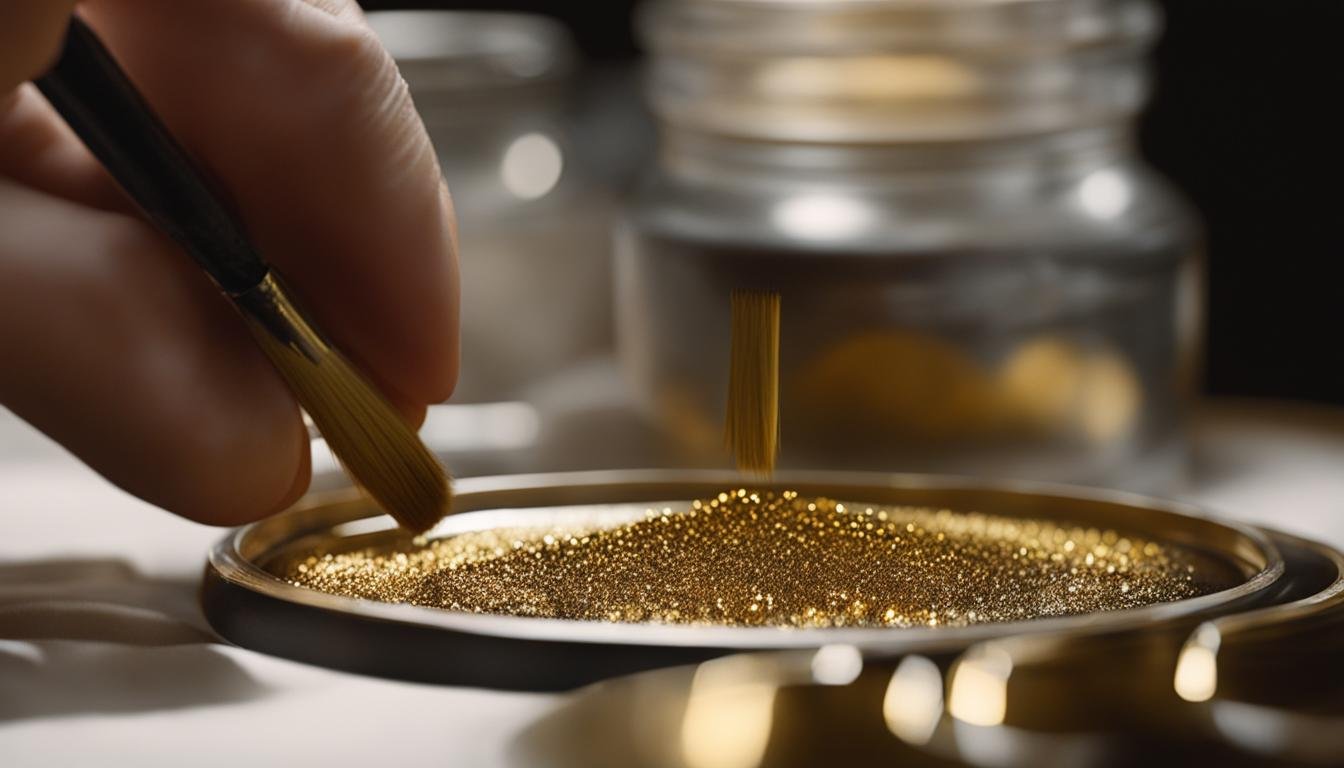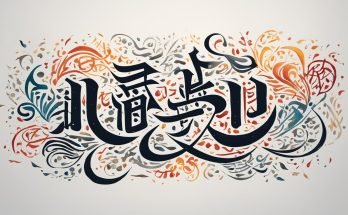Calligraphy Ink Mastery Secrets Revealed: Transform Your Writing With the Perfect Ink Choices!
Welcome to the world of calligraphy ink mastery! In this comprehensive guide, we will delve into the art of choosing and using the perfect inks for your calligraphy projects. Whether you’re a beginner or an experienced calligrapher, understanding the qualities and considerations of different inks is essential to achieve the desired effects and enhance your artistic expression.
Key Takeaways:
- Choosing the right ink is crucial for achieving the desired opacity, consistency, and longevity in your calligraphy.
- Opacity in inks is determined by pigment concentration, with highly-pigmented inks creating a more opaque finish.
- Consistency and ink flow are important factors to consider, as they affect the smoothness and control of your strokes.
- Archival inks are essential for preserving your calligraphy pieces over time, ensuring they remain vibrant and durable.
- The fragrance and smell of inks can enhance or detract from the overall calligraphy experience, so choose wisely.
Opacity in Calligraphy Inks
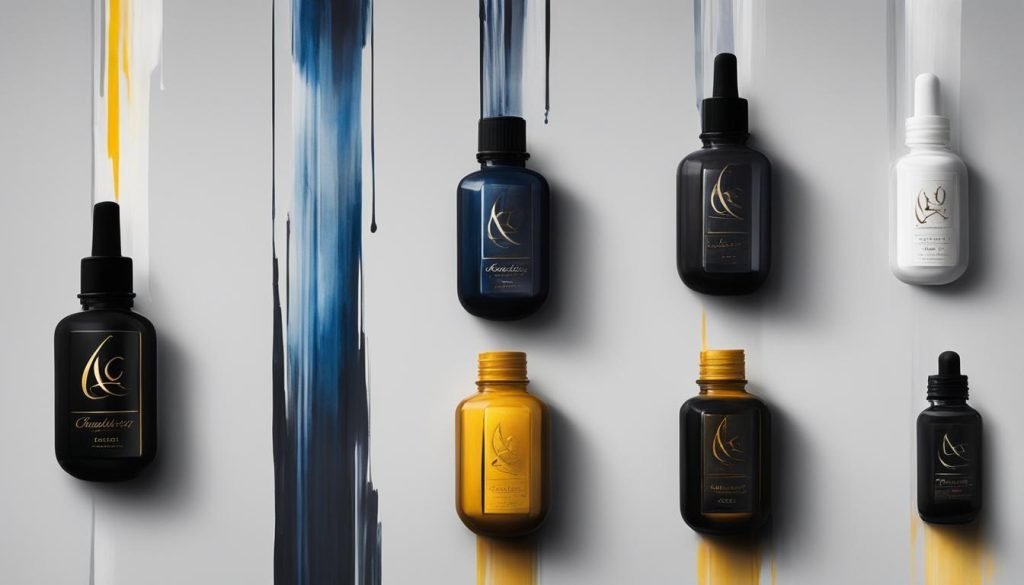
In the world of calligraphy, the opacity of an ink is a crucial aspect to consider. It refers to how opaque or transparent the ink appears on the paper. The opacity of an ink is determined by its pigment concentration. Highly-pigmented inks, such as sumi and acrylics, tend to dry to an opaque finish, creating strong contrast between thin hairlines and thick downstrokes. On the other hand, watery inks like fountain pen ink or watercolor create a more ethereal and translucent look.
When working with light inks on dark paper, it is important to use a very opaque ink in order to make the writing stand out. The opacity of an ink affects the overall visual impact of the calligraphy, making it a key consideration for calligraphers. By selecting inks with the desired level of opacity, calligraphers can achieve the desired effects and enhance the beauty of their compositions.
To showcase the different levels of opacity in calligraphy inks, refer to the following table:
| Ink Type | Opacity |
|---|---|
| Sumi Ink | High |
| Acrylic Ink | High |
| Fountain Pen Ink | Low |
| Watercolor Ink | Low |
As seen in the table, sumi and acrylic inks have a high opacity, making them ideal for projects that require strong contrast and visibility. On the other hand, fountain pen and watercolor inks have a lower opacity, creating a more delicate and translucent effect. Calligraphers can choose the opacity level that best suits their artistic style and project requirements.
Consistency and Ink Flow
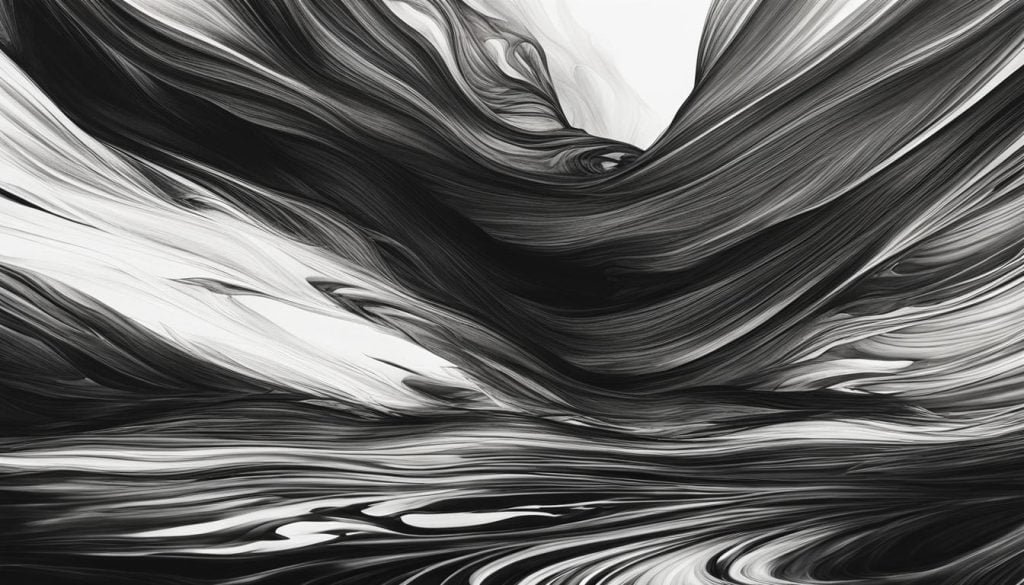
Consistency and ink flow are crucial factors to consider when it comes to selecting a calligraphy ink. Good ink flow from the calligraphy nib is essential for achieving smooth and controlled strokes. Whether you are using a dip pen or a brush pen, the right consistency of the ink ensures a consistent flow and prevents clogging or skipping.
Some calligraphy inks come with the ideal consistency straight out of the bottle, while others may need some adjustments. If an ink is too thick and doesn’t flow smoothly, you can thin it out by adding a few drops of water. On the other hand, if an ink is too watery and doesn’t hold its shape, you can thicken it by adding a small amount of Gum Arabic. It’s important to note that it is easier to thin out a concentrated ink than to thicken a watery ink, so always start with a small amount of water or Gum Arabic and gradually adjust until you achieve the desired consistency.
The consistency of the ink greatly impacts the writing experience and the quality of your calligraphy. When the ink flows smoothly, you have better control over your strokes, allowing you to create consistent lines and shapes. Experimenting with different inks and adjusting their consistency will help you find the perfect ink flow for your preferred calligraphy style.
Table: Recommended Ink Consistency Adjustments
| Ink Consistency | Adjustment |
|---|---|
| Too Thick | Add a few drops of water |
| Too Watery | Add a small amount of Gum Arabic |
Note: The adjustments mentioned above are general guidelines. The exact amount of water or Gum Arabic needed may vary depending on the specific ink and personal preferences.
“The right consistency of the ink ensures a consistent flow and prevents clogging or skipping.”
Longevity and Archival Inks
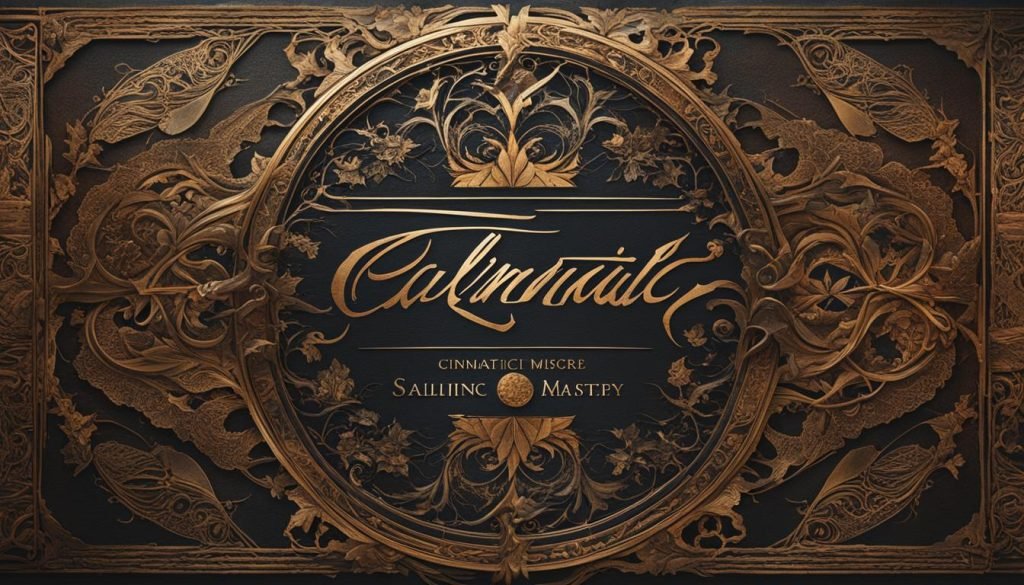
If you want your calligraphy pieces to stand the test of time, it is essential to choose archival inks. Archival inks are specially formulated to be pH-balanced, which means they are low acid or acid-free. This is important because acidic inks can cause paper to deteriorate over time, leading to yellowing, brittleness, and overall degradation of the artwork. By using archival calligraphy inks, you can ensure that your creations will remain vibrant and intact for years to come.
Another aspect to consider when selecting calligraphy inks for longevity is their lightfastness. Lightfastness refers to the ink’s ability to resist fading or discoloration when exposed to light. Archival inks are made with pigments that are known to be lightfast, ensuring that your calligraphy will retain its original colors and vibrancy even with prolonged exposure to sunlight or other sources of light.
“Archival calligraphy inks are a must-have for any serious calligrapher. They are specifically designed to protect your artwork from the effects of time and light exposure. With archival inks, you can be confident that your calligraphy will remain as beautiful as the day it was created.” – Calligraphy Master
Moreover, waterproof inks are an excellent choice for preserving calligraphy on documents or artworks that may come into contact with moisture. These inks are specially formulated to be resistant to water, ensuring that your calligraphy remains intact even if accidentally exposed to liquids. This makes them ideal for addressing envelopes, creating watercolor-inspired calligraphy, or any other project where water resistance is a priority.
| Key Features of Archival Calligraphy Inks |
|---|
| PH-Balanced |
| Lightfast |
| Waterproof |
| Protects calligraphy from paper deterioration |
Choosing the Right Archival Ink
When selecting archival calligraphy inks, it’s essential to consider the specific requirements of your project. Some inks may work better on certain types of paper or surfaces, while others may offer a wider range of colors or effects. Additionally, pay attention to any specific instructions provided by the ink manufacturer, as they may have recommendations on usage and storage to ensure the longevity of your calligraphy.
Investing in archival calligraphy inks is not only about preserving your artwork but also about honoring the time, effort, and creativity you put into your calligraphy pieces. By choosing archival inks, you can confidently create calligraphy that will be cherished and admired for generations to come.
Calligraphy Ink Fragrance and Its Impact on the Writing Experience
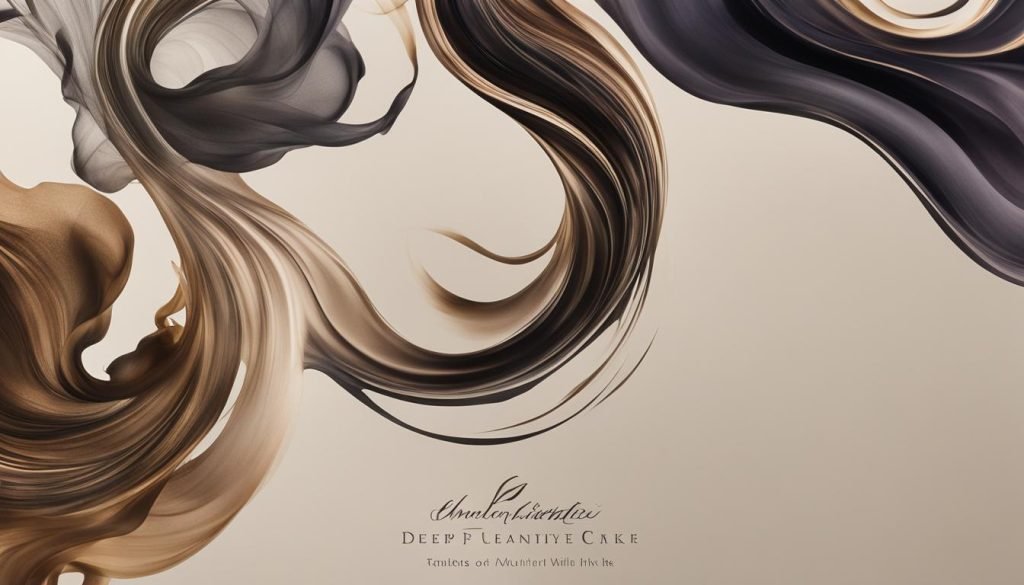
When it comes to choosing calligraphy inks, there’s more to consider than just their color and quality. One often overlooked factor is the fragrance or smell of the ink. While the smell may not affect the writing itself, it can greatly influence your overall experience as a calligrapher.
Some inks, especially those with toxic or strong smells, can be unpleasant to use for extended periods or extensive projects. Neon yellow or waterproof inks, for example, tend to have the strongest smells. However, it’s important to note that not all inks with strong smells are toxic. Some inks, especially those made from natural ingredients, can have a pleasant and soothing fragrance that enhances the creative process.
For individuals sensitive to certain scents, it is crucial to consider the fragrance of the ink before making a selection. Testing different inks beforehand can help you find one that aligns with your olfactory preferences and ensures a comfortable working environment.
Remember, the fragrance of calligraphy inks may not be a deal-breaker, but it is a factor worth considering to enhance your overall calligraphy experience.
“The smell of an ink can greatly affect your calligraphy experience. Finding an ink with a fragrance that you enjoy can make your creative process more enjoyable and productive.”
Table: Comparison of Calligraphy Inks and Their Fragrance
| Ink Type | Fragrance |
|---|---|
| Sumi Ink | Earthy, subtle scent |
| Acrylic Ink | Minimal to no scent |
| Watercolor Ink | Natural and delicate fragrance |
| Metallic Ink | Can have a slightly metallic odor |
| Waterproof Ink | Strong chemical smell |
Table: Comparison of Calligraphy Inks and Their Fragrance
As shown in the table above, different types of calligraphy inks have varying fragrances. Sumi ink, for example, has an earthy and subtle scent, while acrylic inks typically have minimal to no scent. Watercolor inks often have a natural and delicate fragrance, adding a touch of serenity to your artistic process. Metallic inks may have a slightly metallic odor, which can be intriguing for some artists. On the other hand, waterproof inks tend to have a strong chemical smell that may not be pleasing to everyone.
By understanding the fragrance characteristics of various calligraphy inks, you can make an informed choice that not only aligns with your artistic preferences but also enhances your overall calligraphy experience.
Recommended Calligraphy Inks
When it comes to calligraphy inks, there are several options that are highly recommended by experienced calligraphers. These inks have gained popularity for their quality, consistency, and unique properties. Whether you’re a beginner or a seasoned professional, these inks can offer you a range of choices to elevate your calligraphy.
One highly recommended ink is the Moon Palace Sumi Ink. Known for its deep black color and smooth flow, this ink is perfect for both practice and finished work. Its opacity allows for excellent contrast between thin hairlines and thick downstrokes.
If you’re looking to add a touch of elegance to your calligraphy, Dr. Ph. Martin’s Copper Plate Gold and Kuretake Brilliant Gold Mica Ink are excellent choices. These metallic gold inks create a beautiful shimmering effect on the page, adding a luxurious feel to your lettering.
For white calligraphy, Dr. Ph. Martin’s Bleed Proof White and Dr. Ph. Martin’s Pen-White Ink are highly recommended. These inks provide excellent coverage on dark papers and produce crisp, bright white strokes. They are perfect for adding highlights or creating stunning designs on colored or textured backgrounds.
Ziller Inks is another brand that calligraphers swear by. These inks are known for their vibrant colors and smooth flow, making them a joy to work with. Their wide range of colors allows for endless creativity and experimentation in your calligraphy projects.
If you’re looking for something a bit different, J. Herbin Perfumed Violet Ink offers a unique twist. This ink not only has a beautiful violet color but also emits a subtle fragrance as you write. It adds a delightful sensory experience to your calligraphy practice.
Vermillion Sumi Ink is a popular choice for its rich red color. This ink is perfect for adding a bold and striking element to your calligraphy. Its high-quality pigments ensure long-lasting vibrancy and depth.
Lastly, Dr. Ph. Martin’s Black Star Matte Black Ink is a versatile option for both professional calligraphers and artists. This ink provides a velvety black finish and is waterproof, making it suitable for a wide range of calligraphy styles and applications.
| Ink | Properties |
|---|---|
| Moon Palace Sumi Ink | Deep black color, smooth flow, opacity |
| Dr. Ph. Martin’s Copper Plate Gold | Metallic gold, shimmering effect |
| Kuretake Brilliant Gold Mica Ink | Metallic gold, shimmering effect |
| Dr. Ph. Martin’s Bleed Proof White | Bright white strokes, excellent coverage on dark papers |
| Dr. Ph. Martin’s Pen-White Ink | Bright white strokes, excellent coverage on dark papers |
| Ziller Inks | Vibrant colors, smooth flow |
| J. Herbin Perfumed Violet Ink | Violet color, subtle fragrance |
| Vermillion Sumi Ink | Rich red color, high-quality pigments |
| Dr. Ph. Martin’s Black Star Matte Black Ink | Velvety black finish, waterproof |
Calligraphy Inks for Different Paper Types and Surfaces
When it comes to calligraphy, the choice of ink can greatly impact the final result. Different paper types and surfaces require specific types of inks to achieve optimal results. By selecting the right calligraphy ink for your chosen medium, you can ensure that your work stands out and showcases your artistic skills.
Calligraphy Inks for Paper Types
When working with calligraphy, it’s important to consider the characteristics of the paper you’re using. Smooth surfaces like vellum or glossy paper tend to work best with inks that have a higher concentration of pigment. This ensures that the ink adheres smoothly and dries to a crisp finish. On the other hand, textured or absorbent papers like watercolor paper or fabric require inks with better flow and absorption properties. These inks allow for easy control and create rich, textured lines.
Calligraphy Inks for Surfaces
Calligraphy is not limited to paper; it can also be applied to various surfaces like wood, metal, or glass. For these surfaces, it is crucial to choose inks that are specifically designed to adhere well and provide longevity. Waterproof calligraphy inks are ideal for surfaces that may come into contact with moisture or water, ensuring that your calligraphy remains intact. Additionally, custom ink formulations offer the opportunity to create unique colors or effects that suit the specific surface you’re working on.
Overall, the key to selecting the right calligraphy ink for different paper types and surfaces lies in understanding the characteristics of each and choosing inks that complement them. By considering factors like ink flow, absorption, and adherence, you can achieve stunning results that enhance your calligraphy.
| Surface Type | Ideal Calligraphy Ink |
|---|---|
| Smooth Paper (vellum, glossy) | Highly pigmented inks for crisp lines |
| Textured Paper (watercolor, fabric) | Inks with good flow and absorption properties |
| Wood | Waterproof inks that adhere well |
| Metal | Quick-drying inks that provide durability |
| Glass | Inks specifically designed for glass surfaces |
Exploring Ink Additives and Customization
Customizing your calligraphy inks can open up a world of possibilities for creative expression. By adding ink additives and experimenting with custom formulations, you can fine-tune the consistency, color, and flow of your inks to suit your artistic vision. Whether you’re looking to achieve a specific effect or simply want to personalize your calligraphy experience, here are some insights into ink additives and customization techniques.
Ink Additives: Enhancing Consistency and Flow
If you find that your ink is too thick or too runny, ink additives can come to the rescue. One popular additive is Gum Arabic, which can be mixed with ink to increase its flow and improve the consistency. Gum Arabic also helps prevent feathering and bleeding when using porous or textured papers. By adjusting the amount of Gum Arabic added, you can achieve the desired viscosity for your calligraphy projects.
Custom Ink Formulations: Exploring Colors and Effects
Custom ink formulations allow you to create your own unique colors and effects, giving your calligraphy a personalized touch. By blending different ink colors together, you can create beautiful gradients and shades that add depth and dimension to your lettering. Experimenting with metallic pigments, shimmering micas, or even natural dyes can result in stunning visual effects that elevate your calligraphy to new heights. The possibilities are endless when it comes to customizing your inks to suit your style and artistic preferences.
Summary of Calligraphy Ink Additives and Customization
| Ink Additives | Custom Ink Formulations |
|---|---|
| Enhances ink consistency | Creates unique colors and effects |
| Improves ink flow | Allows for personalization |
| Prevents feathering and bleeding | Provides depth and dimension |
| Adjustable viscosity | Reflects individual artistic style |
Exploring ink additives and customization techniques adds a whole new level of creativity and personalization to your calligraphy practice. Whether you’re adjusting the consistency with ink additives like Gum Arabic or experimenting with custom ink formulations to create unique colors and effects, the ability to customize your inks allows you to truly make your mark. Let your imagination guide you as you embark on the journey of exploring the endless possibilities of calligraphy ink additives and customizations.
Conclusion
After exploring the various aspects of calligraphy inks, it is clear that selecting the right ink is crucial for achieving the desired results in your calligraphy projects. The opacity of the ink determines the contrast and impact of your strokes, while consistency and ink flow play a significant role in the smoothness and control of your writing. Additionally, considering the longevity and archival qualities of the ink ensures the preservation of your artwork over time.
The fragrance and smell of the ink may not affect its writing quality, but it can greatly influence your overall experience. Choosing inks with pleasant scents or opting for non-toxic options can enhance your calligraphy sessions. The recommended calligraphy inks mentioned in this guide offer a wide range of options to suit different preferences and artistic needs, providing you with ample choices to explore and experiment with.
Furthermore, understanding the compatibility between calligraphy inks and different paper types or surfaces is crucial for achieving the desired outcomes. Waterproof inks are particularly useful for projects that require resistance to moisture, while custom ink formulations allow for unique colors and effects. By exploring ink additives and customizing your own ink, you can add a personal touch to your calligraphy and unlock new realms of creativity.
In conclusion, calligraphy inks serve as the foundation of your artistic expression. By considering the various factors discussed in this guide, you can make informed choices and elevate your calligraphy to new heights. Experiment, have fun, and let your creativity flow as you continue your journey with calligraphy ink mastery.
FAQ
What is the importance of opacity in calligraphy inks?
Opacity in calligraphy inks determines the contrast between thin hairlines and thick downstrokes. It is crucial for creating visibility and impact, especially when using light inks on dark paper.
How does consistency affect calligraphy ink flow?
Consistency is essential for achieving smooth and controlled strokes. Good ink flow from the calligraphy nib is necessary, and the ideal consistency can be achieved through mixing with water or Gum Arabic.
What are archival inks, and why are they important for calligraphy?
Archival inks are pH-balanced, lightfast, and waterproof. They prevent deterioration over time and are ideal for preserving calligraphy on documents or artworks. Pairing archival inks with archival paper ensures longevity.
Does the fragrance of ink affect the calligraphy experience?
While fragrance does not determine writing quality, it can impact the user’s experience. Some inks, especially those with toxic or strong smells, may be unpleasant to use for long periods, so it’s important to consider this factor when selecting inks.
Which calligraphy inks are recommended by professionals?
Some recommended calligraphy inks include Moon Palace Sumi, Dr. Ph. Martin’s Copper Plate Gold, Kuretake Brilliant Gold Mica, Dr. Ph. Martin’s Bleed Proof White, Dr. Ph. Martin’s Pen-White Ink, Ziller Inks, J. Herbin Perfumed Violet Ink, Vermillion Sumi Ink, and Dr. Ph. Martin’s Black Star Matte Black Ink.
Can calligraphy inks be used on different types of paper and surfaces?
Yes, different calligraphy inks are suitable for various paper types and surfaces. Some inks work better on smooth surfaces like vellum or glossy paper, while others are more compatible with textured or absorbent surfaces like watercolor paper or fabric.
Can I customize my own calligraphy ink formulations?
Yes, calligraphers can explore ink additives and customize their own ink formulations. Ink additives like Gum Arabic can adjust consistency, and blending different ink colors allows for creating unique shades and gradients.
What factors should I consider when selecting calligraphy inks?
When selecting calligraphy inks, consider opacity, consistency, longevity, fragrance, and compatibility with your paper and surface. The specific requirements of your calligraphy project and your personal preferences should also be considered.

